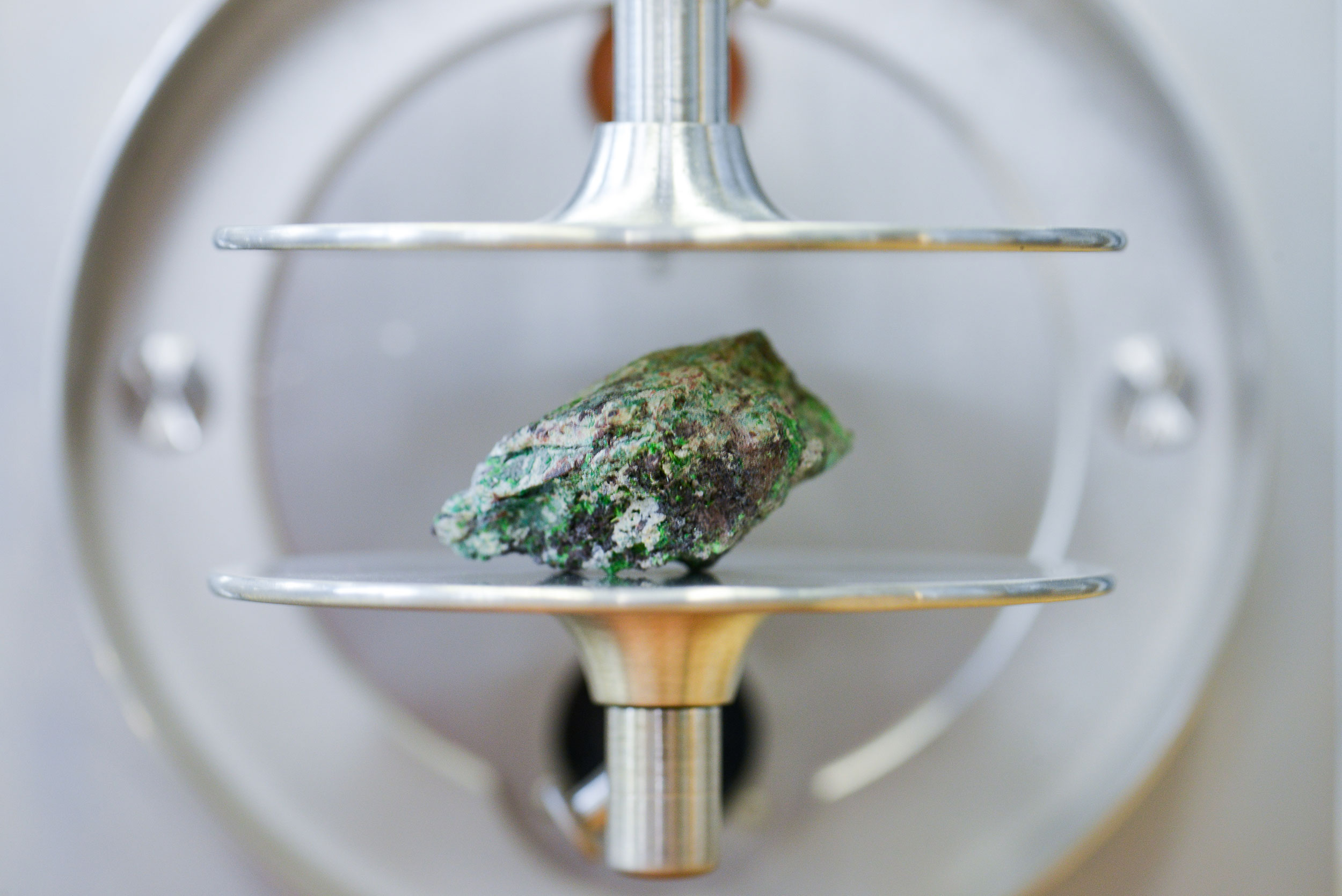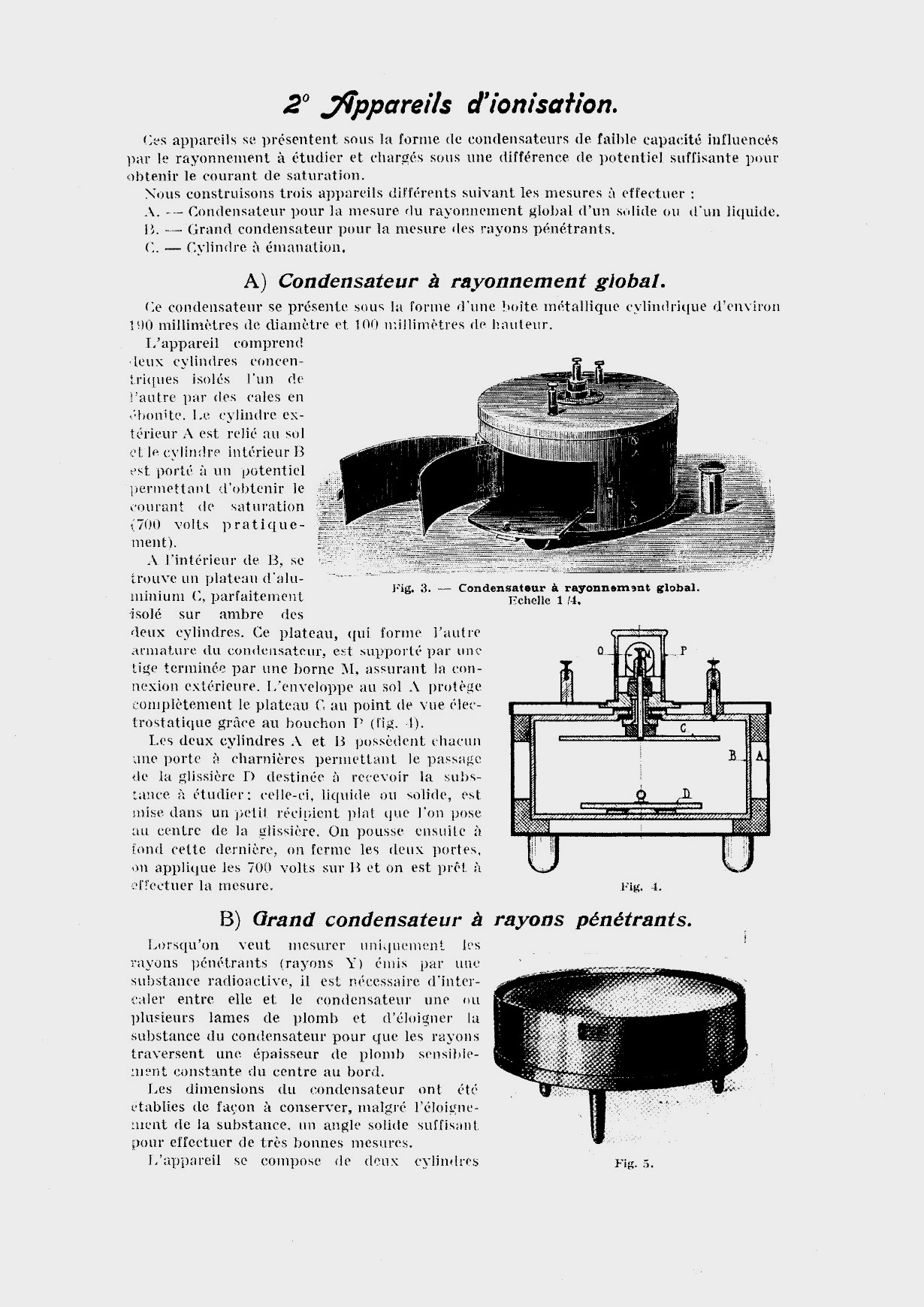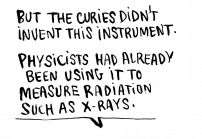
The electrons and ions released as the rays pass through do indeed have an electric charge. The more intense the ionizing radiation, the greater the electric charge that is released. By measuring the electric charge, you can estimate the intensity of the radiation emitted by a radioactive source.

In the Curies’ experiments, the ionization chamber was the instrument that transformed uranium rays into an electric charge. It is composed of two metal plates between which the radioactive substance to be studied is placed.
Each plate is connected to the terminals of a battery or a power generator. The chamber is sealed with a cover that prevents the gas and electric charges from escaping. The radiation released by the substance being studied ionizes the gas inside the chamber, producing positive electric charges (ions) and negative electric charges (electrons).
These electric charges are attracted, respectively, to the negatively and positively charged plates. As they move, the electric charges create an electric current proportional to the radiation. In this way, the ionization chamber acts as a “converter” that transforms radioactivity into electricity. By measuring the electric charge generated by an ore, you can deduce its radioactive emission.
1From Marie Curie’s dissertation, Recherches sur les substances radioactives (Research on Radioactive Substances), 1903.














